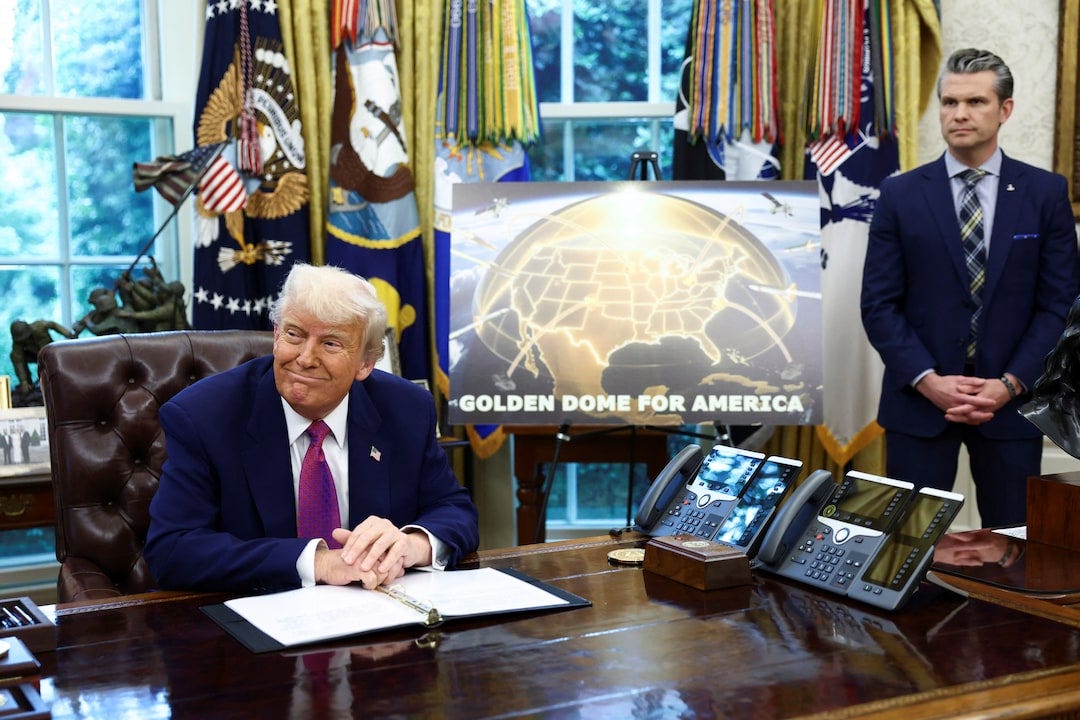George Gilder: Trump in Space
In some respects, the President's Golden Dome missile shield makes him even more Reagan's true heir than his tax policy.
This essay is free, but with Premium Membership you get MORE. Join today.
NOTE: My friend George Gilder was Ronald Reagan’s most-quoted living author and one of the principal fathers of the Supply-Side Economics that powered the Reagan boom and ended — for almost half a century now — the postwar every-two-and-a-half-year cycle of recession and “recovery”. His Information Theory of Economics is transformative. We published his must-read “Trump is Reagan’s True Heir” last week.
But George is also one of the genuine prophets of the Information Age, and he was also present at the creation of Reagan’s Strategic Defense Initiative (SDI, or “Star Wars”). So this essay is particularly significant. — RDM
by George Gilder
July 29, 2025
Ronald Reagan redefined economics and ushered in 40 years of prosperity, low inflation, and low interest rates by his supply-side tax cutting program. President Trump is continuing and enhancing that legacy.
Even more revolutionary, and certainly further ahead of its t…





